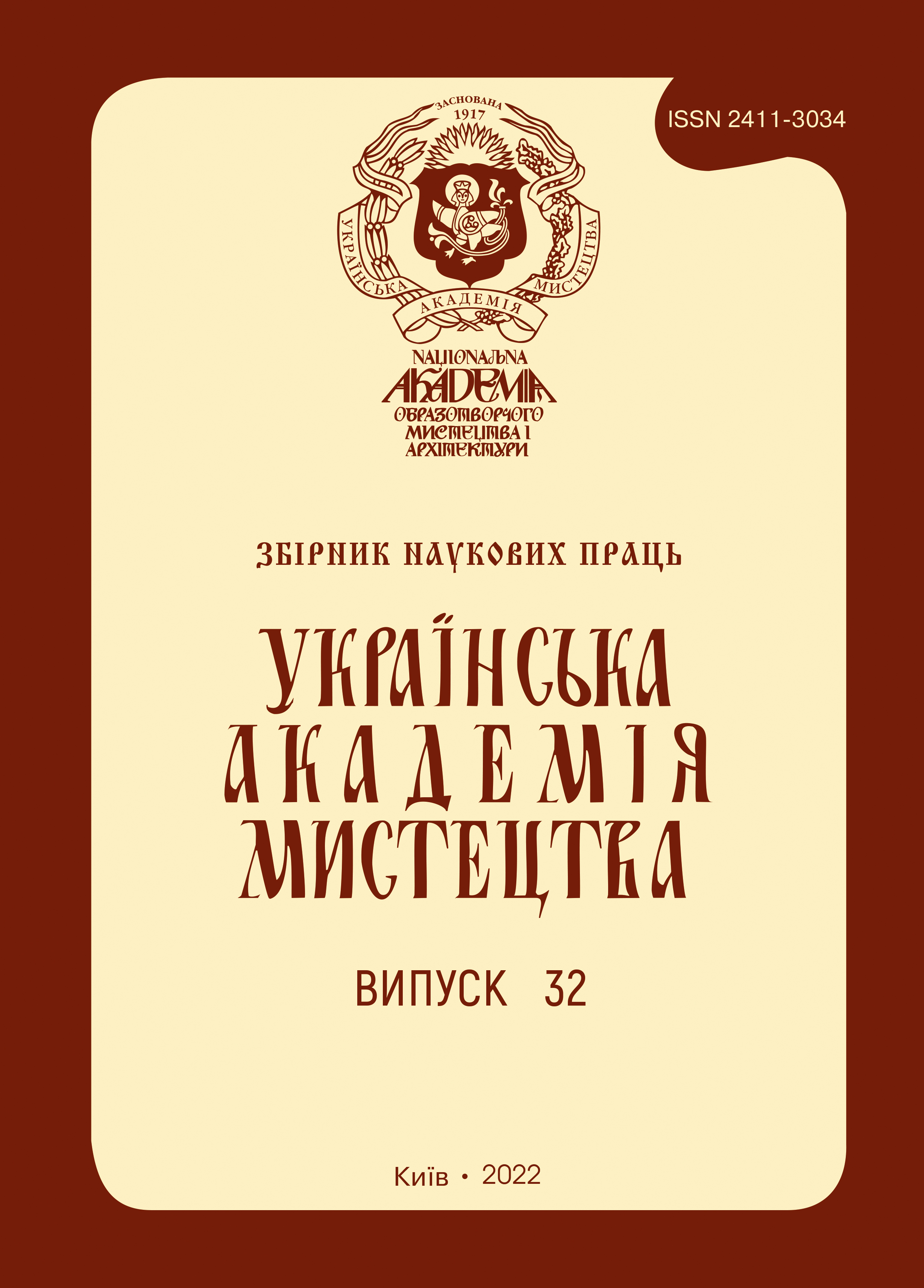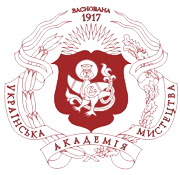CONTEMPORARY CALLIGRAPHY IN PERFORMATIVE PRACTICES OF ARTISTS OF CHINA
DOI:
https://doi.org/10.32782/2411-3034-2022-32-12Keywords:
modern calligraphy, line, performance, modern Chinese art.Abstract
Abstract. The article highlights the trends in the development of modern Chinese visual art in the context of the transformation of traditions into ultra-modern types of visual art, keeping the key message in the primary philosophical sense. The focus of the study is on the work of artists who transform the traditional art of calligraphy into a modern performative act in order to reproduce the feeling of the flow of calligraphic movements. Traditional art in every nationality plays a very important role as the basis of cultural heritage. It is in this context that contemporary performative practices based on calligraphy, as one of China’s oldest visual arts, are interesting for research. In such a transformative combination, we can observe how the mission to preserve the centuries-old traditions of China is re alized. Using specific examples of group and personal projects, an art-critic analysis of the performances of contemporary artists will be carried out, as one of the most dynamic and controversial spheres of experimental art practice in China. The growth of the development of all types of visual arts in China after the Cultural Revolution became the basis for the development of performative practices. Transforming the philosophical foundation and aesthetic component of the traditional art of Chinese calligraphy, contemporary artists create relevant art and combine it with performative practices. The uniqueness of the phenomenon of performance with the use of calligraphy is that the aesthetics of the movements of the traditional art of calligraphy, laid together with the birth of calligraphy, dictates the performance of calligraphic works in modern works as well. Based on the traditional techniques of writing a calligraphic work, the art of movements was realized in the transformation of the human body into an instrument of the artist’s creation. In conclusion, it is emphasized that the combination of «traditional» with «newest» trends in one work contributes to the rethinking of the role of thousand-year-old images in the art of today, as well as the identification of Chinese artists in the globalized intercultural space. The information contained in this article will be useful during an in-depth study of the art of Chinese calligraphy.
References
Berghuis T. J. Performance Art in China. Blue Kingfisher, 2007. 324 р.
Huan Z., Liuming M. and Zhijian Q. Performing Bodies: Zhang Huan, Ma Liuming, and Performance Art in China. Art Journal. Vol. 58, No. 2, Summer, 1999. Pp. 60-81. DOI: https://doi.org/10.2307/777949 (дата звернення: 29.11.2022).
Berghuis T. J. Considering Huanjing : Positioning Experimental Art in China. Positions: East Asia Cultures Critique, 12(3), 2004, 711–731. DOI: https://doi.org/10.1215/10679847-12-3-711 (дата звернення: 29.11.2022).
Hung, R. Self-cultivation through art: Chinese calligraphy and the body. Educational Philosophy and Theory, 2021. 1–5. DOI: https://doi.org/10.1080/00131857.2021.1977624 (дата звернення: 29.11.2022).
Kern M. Made by the Em pire: Wang Xizhi’s Xingrangtie and Its Paradoxes DOI: https://doi.org/10.1353/aaa.2016.0003 (дата звернення: 29.11.2022).
Iezzi A. Contemporary Chinese Calligraphy Between Tradition and Innovation. Journal of Literature and Art Studies, ISSN 2159-5836 March 2013, Vol. 3, No. 3, Рр. 158-179. DOI: https://doi.org/10.17265/2159-5836/2013.03.003 (дата звернення: 29.11.2022).
Escande,Y. Tang Dynasty Aesthetic Criteria: Zhang Huaiguan’s Shuduan. Journal of Chinese Philosophy, vol. 41, issue 1-2, march-June 2014, pp. 148-169. DOI: https://doi.org/10.1163/15406253-0410102010 (дата звернення: 29.11.2022).
Spengler O. The Decline of the West. V. 1. New York: Alfred A. Knopf, 1928. 443 p.
Alberti L. B. On Painting. Book One. [First appeared 1435-36]. Translated with Introduction and Notes by John R. Spencer. New Haven: Yale University Press, 1970. 59 p.
Kandinsky, W. Punkt und Linie zu Fläche. Bauhausbucher 9. Verlag Albert Langen: München, 1928. 194 p.
Майстренко-Вакуленко Ю. Лінія в мистецтві авангарду. Художня культура. Актуальні проблеми. 2020. Вип. 16(2). С. 104–115. DOI: https://doi.org/10.31500/1992-5514.16(2).2020.217799.
Museum of Modern Art. On Line Explores the Transformation of Drawing throughout the Twentieth and Twenty-First Centuries. Nov 21, 2010 – Feb 7, 2011. URL: https://www.moma.org/documents/moma_press-release_387220.pdf?_ga=2.144599344.446230298.1669558659-1023260790.1669558659 (дата звернення: 27.11.2022).
Fischer-Lichte E., The Transformative Power of Performance: A New Aesthetics. London & New York : Routledge, 2008. 232 p.
Вишеславський Г. Перформанс в культурі і мистецтві 1950–2010 років. Плинність форм і змістів. Сучасне мистецтво. 2019. Вип. 15. С. 77–102. DOI: https://doi.org/10.31500/2309-8813.15.2019.185922.
Spengler O. The Decline of the West. V. 2. New York: Alfred A. Knopf, 1928. 507 p.
Ying L. Negotiating with the Past: The Art of Calligraphy in Post-Mao China ASIANetwork Exchange (spring 2012, volume 19, 2)DOI: https://doi.org/10.16995/ane.27 (дата звернення: 29.11.2022).
Pu, Y. | international exhibition of calligraphy. URL: http://calligraphy-expo.com/en/participants/Yuan_Pu/calligraphy-and-health (дата звернення: 29.11.2022).
Li, W. Chinese Writing and Calligraphy. Honolulu: University of Hawai’I Press, 2009. 280 р.
Majid, A. |Ink and the body: a phenomenological approach (б. д.). URL: https://www.inkstudio.com.cn/press/24/ (дата звернення: 29.11.2022).
新作 – 王冬龄 – 展览 – chambers fine art. (б. д.). Chambers Fine Art. Wang Dongling: New Works Installation view. URL: http://www.chambersfineart.com/ch/zhan-lan/xin-zuo (дата звернення: 29.11.2022).




